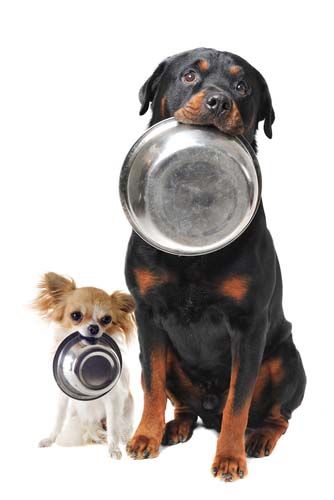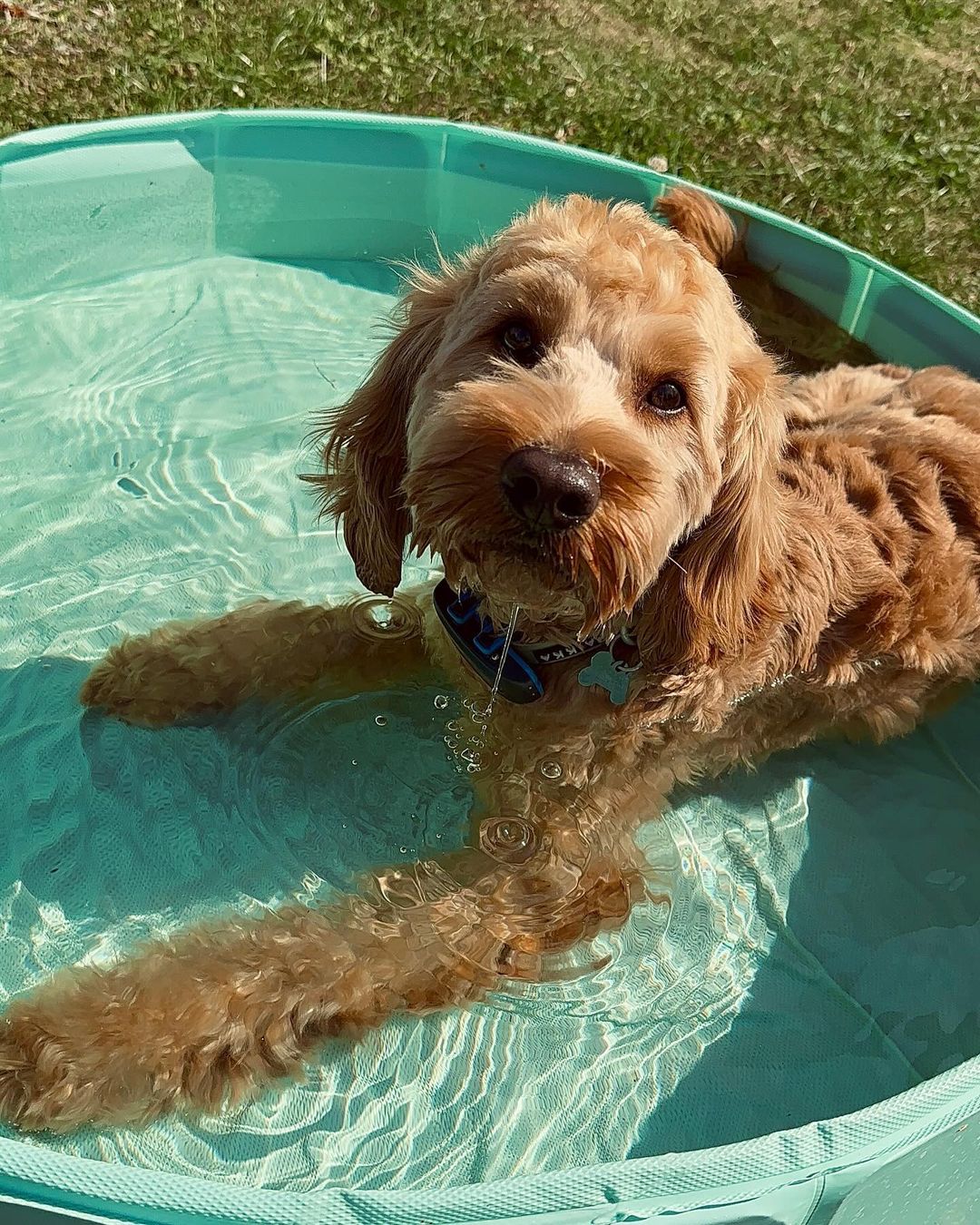Why Does My Dog Pee near his Food Bowl?
{"isSaved":[],"isRead":["671751582d43c0b4571d2b80","672865b021b0df397f2494c8"]}

Ever caught your dog peeing in his food bowl and found yourself utterly baffled? You’re not alone — this odd behavior has left many dog parents wondering, "Why does my dog pee in his food bowl?" Believe it or not, this puzzling habit is more common than you might think and is especially noticed in younger dogs or pups. It could stem from anxiety, diseases like UTI, or even a way of marking territory. It could also happen amidst transitions like confusion during house training or as a response to new surroundings.
While it’s not something any dog parent would appreciate, issues happen, and there are remedies to cure this habit. But before talking about possible ways to tackle this problem, let's understand the issues at a deeper level.
Why Does My Dog Pee in His Food Bowl?
1. Medical Concerns: UTI or Bladder Issues

If your dog is suddenly peeing in unusual places, like their food or water bowl, it could be a sign of an underlying medical issue. One of the most common culprits is a urinary tract infection (UTI).
According to a study published in Today’s Veterinary Practice, UTIs occur in about 27% of dogs and can cause frequent urination, that too, in places they wouldn't normally choose, as the infection causes discomfort. Dogs with UTIs might associate their food or water bowls with comfort and safety, leading to accidents in these areas.
Bladder issues, such as bladder stones or inflammation, are another possible cause. These conditions can obstruct the urinary tract, making urination painful and leading to accidents. A report in PetMD highlights how bladder issues can cause strain to urinate or urinate frequently but only pass small amounts of urine each time. Conditions like diabetes or kidney disease can also contribute to these behaviors, as they affect the body’s ability to process and excrete fluids properly.
What do we suggest? Consult a vet. A proper diagnosis through tests like a urine analysis can help identify the issue and provide a treatment plan for your pet.
2. Anxiety Buildup in Dogs
Just like humans, dogs can experience anxiety for various reasons, which leads to unusual behaviors like peeing in their food bowls. When dogs are left alone for extended periods or experience major changes in their environment or lifestyle, their anxiety can build up.
Separation anxiety, in particular, is one of the most common forms of canine anxiety, which results in destructive behaviors or loss of control. If anxiety is left unchecked, it can cause dogs to act out in ways that may seem strange to us.
According to a study published in the Frontiers, separation anxiety is one of the most common forms of anxiety in dogs, and it can manifest through destructive or abnormal actions.
Major life changes, such as moving to a new home, introducing new pets, or even small shifts in routine, can trigger anxiety in dogs. These changes disrupt their sense of security, leading them to act out in ways that help them cope with their stress.
In such cases, creating a stable, comforting environment and providing them with plenty of exercise and attention can help reduce anxiety. If the behavior persists, consulting a vet or canine behaviorist is a good idea to get deeper insights into managing your dog's anxiety.
3. Marking Territory To Show Dominance
Dogs use urination as a way to communicate, and one common reason is marking their territory. Sometimes, this behavior extends to unusual places like their food bowls, as a way of asserting dominance or claiming ownership over a resource.
Marking serves as a signal to other pets living in the same house, confirming their control over the place. According to VCA Animal Hospitals, territorial marking is especially common in multi-dog households or during periods of change, such as the introduction of a new pet or person.
This attitude is not necessarily about aggression but more about establishing boundaries. To address it, consistent training and building positive habits can help reduce territorial marking. If the peeing continues, then it is best to visit a vet or professional trainer to discuss effective solutions for managing your dog's dominance-related behaviors.
How to Stop My Dog from Peeing in His Food Bowl?
1. Proven Training Methods and Behavioral Solutions for Dogs
Correcting unwanted behaviors in dogs, such as inappropriate urination or territorial marking, requires a combination of regular training, addressing underlying anxiety, and adjusting habits like feeding times. The first step is to identify the root cause — whether it's anxiety, dominance, or confusion. Once identified, create a steady daily routine to reduce anxiety, as dogs thrive on structure.
One of the most effective methods of training is positive reinforcement. Reward your dog with treats, praise, or affection when they show the correct behavior. This encourages them to repeat the desired actions. Avoid punishment, as it can increase anxiety or confusion. If your dog is marking territory by peeing in his/her food bowl, stay vigilant and remove the bowl as soon as they're done eating. Set up regular bathroom breaks to lower accidents.
Remember to be patient throughout the process. Behavioral changes don't happen overnight, so they won't disappear overnight either. Be consistent and calm. With time, routine, and encouragement, your dog will gradually learn better habits. If all these efforts don't work out, then you can always consult a professional trainer or veterinarian for advice.
2. When to Bring in the Professionals: Vet & Behaviorist
Sometimes, despite all your efforts, your dog's behavior or health issues may persist or worsen, indicating it's time to seek professional guidance. If your dog is showing signs of excessive urination, unusual marking, or repeated accidents — don't waste any more time and consult a veterinarian. As we already mentioned before, these behaviors may be symptoms of underlying medical conditions such as UTI, bladder stones, or hormonal imbalances.
For unresolved behavioral problems like aggression, separation anxiety, or destructive habits, a certified canine behaviorist can offer specialized help. If regular training and positive encouragement from your end haven't been effective, professionals can identify deeper triggers, such as fear, stress, or dominance, and create a personalized behavior modification plan for your furry companion.
A combination of veterinary care and behavioral assessments can give you a full picture of your dog's health. Addressing these issues when they are at an early stage will make sure your dog remains healthy, happy, and well-mannered.
3. Smart Strategies To Keep Your Dog’s Eating Area Clean
It's completely normal for you to get puzzled every time your dog pees in his food bowl, but it is manageable with the right steps. So, don’t freak out!
Start by setting up a regular feeding schedule. Dogs bloom on structure, and knowing when exactly mealtime is will lower their anxiety, and this can prevent marking behavior. Now, designating a specific area for food and water bowls gives your dog clear boundaries, helping them understand that these areas are for eating and drinking only. This clear separation can prevent confusion and encourage better habits.
Make it a point to wash their feeding bowls after every meal to prevent bacteria buildup, and clean the area around the feeding spot frequently. Placing a non-slip mat under the bowls can help contain messes and prevent spills. With a tidy eating space and a set routine, you'll create a more disciplined environment for your dog, where they understand better about the purpose of specified areas.
Join the sploot Community of Passionate Dog Lovers
Connect with a lively group of over 50,000 dedicated dog parents and canine experts at sploot, all sharing their experiences and insights on raising the most well-behaved and happy dogs. Our space lets you ask questions, shop for premium dog services and fresh meals, and discover valuable tips to level up your dog parenting journey. Engage with us through AMA sessions, Pup Talks, and exclusive events, and follow us on Instagram for the latest updates.
Frequently Asked Questions- (FAQs)
1. How do I get my dog to stop peeing in the water bowl?
To stop your dog from peeing in the water bowl, set a proper bathroom routine, create separate spaces for eating and bathroom needs, and consult a vet to rule out medical issues like UTIs or behavioral concerns.
2. Do dogs like to pee where they eat?
No, dogs never pee where they eat. If they do, it could be due to anxiety, confusion, or a medical issue like a UTI.
3. Why does my dog pee when I feed him?
If your dog pees when you feed him, it could be due to excitement, anxiety, or a medical issue like a urinary tract infection. It may also be linked to confusion about where to relieve themselves. Consulting a vet or behaviorist can help identify the root cause and provide a solution.
